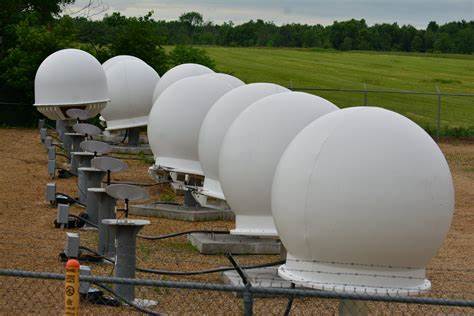The launch of a new Starlink ground station in Kenya marks a major milestone in advancing internet connectivity across Africa.
This development promises to significantly reduce latency for Starlink users across the continent, offering faster and more reliable internet access in a region where connectivity challenges remain a persistent issue.
Latency, a critical factor in internet performance, refers to the time it takes for data to travel from one point to another. Satellite-based internet services like Starlink have traditionally struggled with higher latency compared to fiber and mobile broadband. This is because data from a user’s satellite dish must travel to a satellite orbiting hundreds of kilometers above the Earth, then to a ground station connected to the internet, before finally reaching its intended destination. This multi-step process naturally increases the time it takes for data to travel.
To address this challenge, Starlink has employed two key strategies: launching more satellites into orbit and increasing the number of ground stations, also known as Points of Presence (POPs). These ground stations act as physical hubs where satellites connect to the internet, reducing the distance data has to travel. The closer a ground station is to a user, the lower the latency.
Previously, Africa had only one Starlink ground station, located in Nigeria. Users across the continent relied on this single facility, even in countries thousands of kilometers away. This resulted in latency ranging between 120 and 150 milliseconds for many users. The launch of the new ground station in Nairobi, Kenya, has already begun to change this dynamic. Users are now reporting consistent latencies as low as 30 milliseconds, a dramatic improvement that makes Starlink’s satellite internet performance comparable to that of terrestrial broadband.
The benefits of this advancement are particularly significant for Africa, where vast rural areas, limited broadband infrastructure, and high connectivity costs have long hindered digital growth. By reducing latency, Starlink enables faster browsing, seamless video streaming, and smoother real-time communication. These improvements will have profound implications for sectors such as education, healthcare, e-commerce, and remote work, helping to unlock economic opportunities and drive development across the continent.
For example, in countries like Zimbabwe, where latency had been consistently high, the Nairobi ground station offers a closer and more efficient point of connection. This reduces delays and enhances the overall user experience, making internet-based activities more accessible and reliable.
Globally, Starlink had approximately 33 active ground stations before the Kenyan facility went live, most of which were concentrated in North America, where the majority of its subscribers are located. The addition of the Kenyan ground station demonstrates Starlink’s commitment to expanding its reach and improving services in underserved regions. This move also underscores the importance of including Africa in the global digital transformation.
Starlink’s continued expansion holds immense promise for Africa’s digital future. As more ground stations are deployed and satellite coverage increases, millions more people across the continent will gain access to affordable, high-speed internet. This connectivity will bridge the digital divide, fostering innovation and enhancing Africa’s ability to compete in the global digital economy.
The Nairobi ground station represents more than a technical upgrade. It is a step toward greater digital inclusion and a connected future for Africa. By enabling faster and more reliable internet access, Starlink is not only transforming how Africans engage with the internet but also unlocking new possibilities for growth and progress across the continent.















Comments